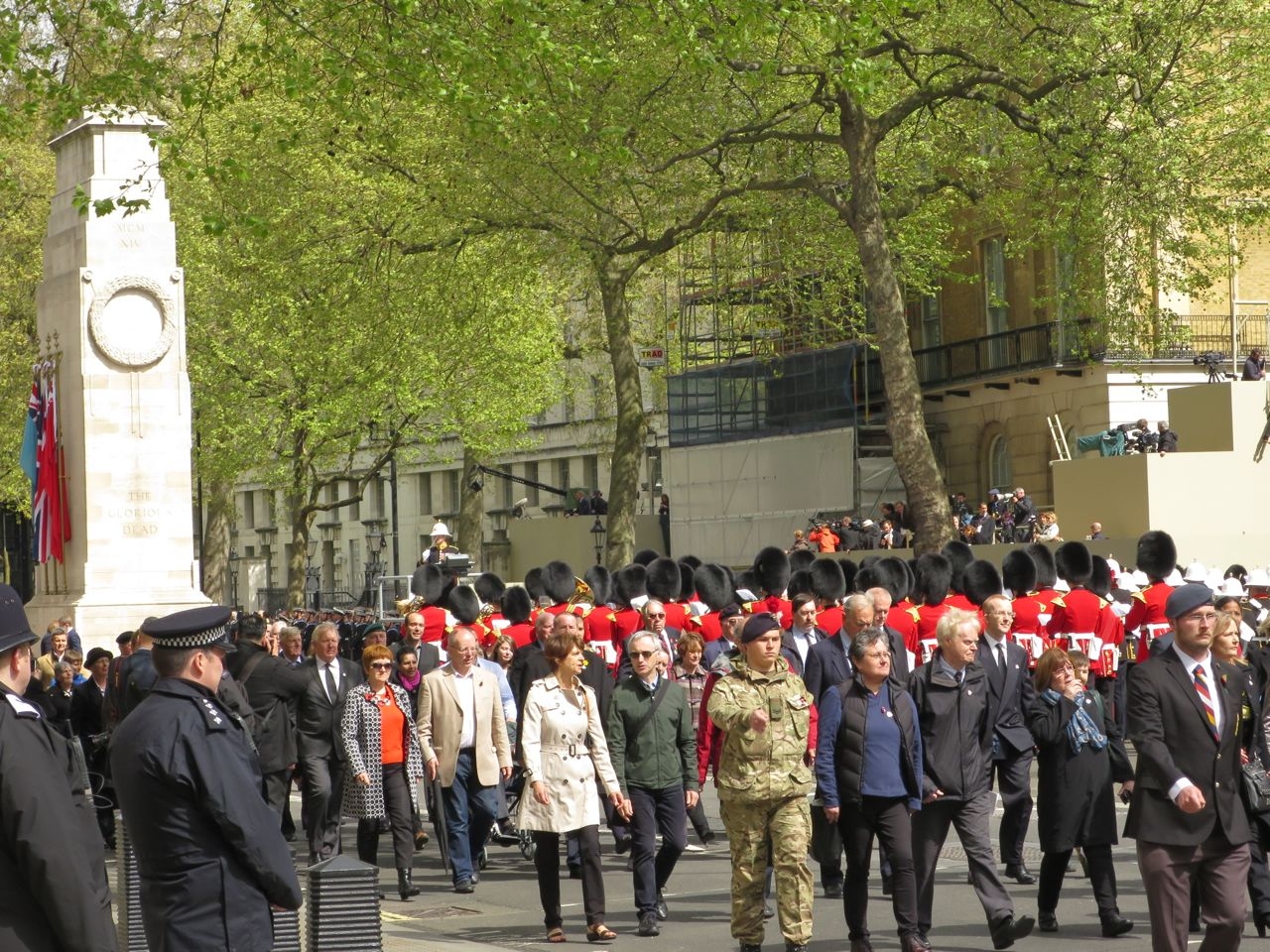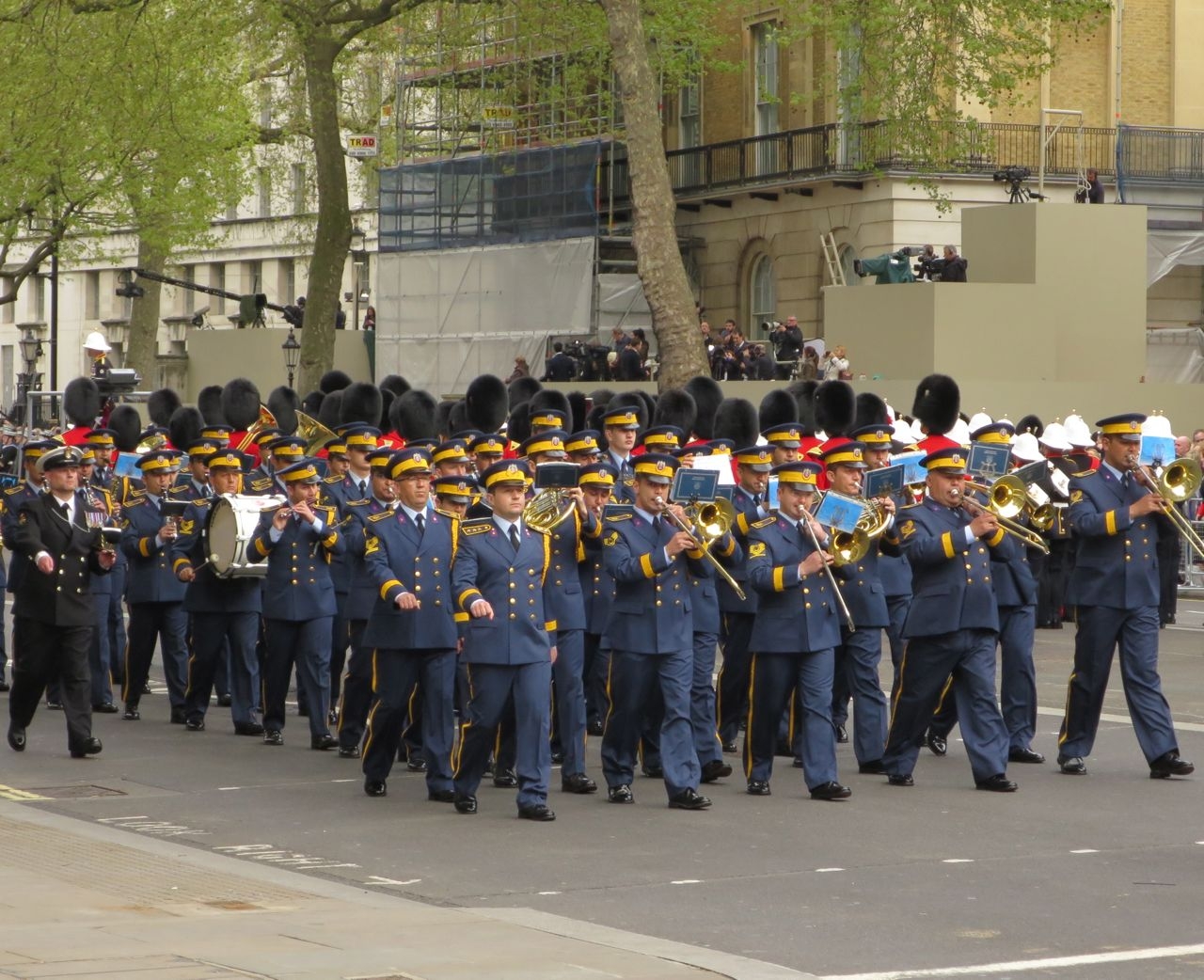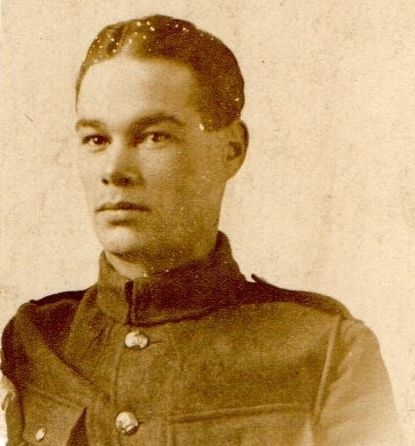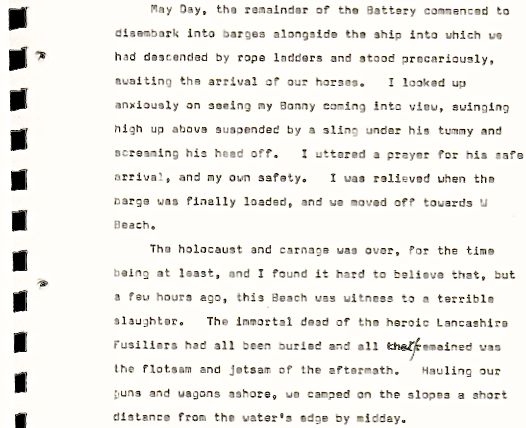Tributes have been paid in Turkey and around the world to all those who fought in the Gallipoli campaign 100 years ago.
Huge crowds gathered in the early hours of April 25th for traditional services remembering dawn on this day in 1915 when Allied troops began their assault on the beaches of the Gallipoli peninsula.
Record numbers of people are reported to have turned out in Australia and New Zealand, whose national identities were shaped by the First World War.
In London, hundreds of Gallipoli veterans’ descendants took part in a march-past after the centenary commemorations at the Cenotaph attended by Queen Elizabeth and representatives from the Commonwealth, France, Germany and Turkey.

Descendants of Gallipoli veterans marching past the Cenotaph in Whitehall, London. Cadet Daniel Davison (in centre of picture) and his mother, Geraldine Meneaud-Lissenburg, are among those paying tribute. Read more at the foot of this article.
The leaders of Australia and New Zealand laid wreaths in Turkey at the commemorative site overlooking Anzac Cove, underlining the bonds forged between the two nations at Gallipoli and the significance for both of April 25th, Anzac Day.
In his Anzac Week message, Australian Prime Minister, Tony Abbott, said: “Our forebears faced terrible trials, but the worst of times brought out the very best in them.
“Their perseverance, selflessness, courage and compassion came to define us as a nation.”
The aim of the Gallipoli campaign was to knock Germany’s ally, Turkey, out of the First World War. A century later, former adversaries are united in remembrance.
Speaking at Anzac Cove, New Zealand Prime Minister John Key said: “Time and the perspective of history have cast the Gallipoli campaign, and some of the military decisions that were made, in a different light.
“But 100 years ago, both sides were doing what they believed was right, and what they believed was necessary.
“The campaign waged here ensured that the name of this place would be written into the histories of New Zealand, Australia, Britain, Turkey, and the many other countries that fought here – never to be erased.”
Proud
The Gallipoll commemorations will rank as some of the biggest of the First World War Centenary.
Dr Brendan Nelson, Director of the Australian War Memorial, said he was delighted with record attendance figures for the Anzac Day ceremonies.
“Today is the biggest Anzac Day commemoration we have ever experienced at the Australian War Memorial. I am proud that so many people have chosen to commemorate the Centenary anniversary of the landing on Gallipoli, which left such a significant legacy for our country,” Dr Nelson said.
Centenary News spent April 25th with the crowds in London watching the tributes to more 130,000 troops, both Allied and Turkish, who fell in one of the most controversial episodes of the war.
The emphasis was on both reconciliation and remembrance.
Mustafa Kemal Atatürk’s 1934 ‘message to bereaved pilgrims’ was read by a Turkish teenager at the Cenotaph.
The descendants of Gallipoli veterans, some proudly carrying pictures of relatives, marched down Whitehall behind the band of the Turkish Air Force.

The Turkish Air Force Band at the Cenotaph march-past
Cities and towns hosting Anzac Day commemorations included Ottawa, Dublin, Edinburgh, and Ypres as well as the Australian National Memorial at Villers-Bretonneux in France.
In New Zealand, the Dawn Service and National Service of Commemoration were held at the newly opened Pukeahu National War Memorial Park in Wellington.
—————————————————————————————–
Centenary News Update – Monday 27 April 2015
One family’s story from the Cenotaph, London
Since posting our main story above, we have been contacted by a family we photographed marching in the London parade. They’ve sent us details of their connection to Gallipoli.
Cadet Daniel Davison and his mother, Geraldine Meneaud-Lissenburg, took part in the march-past in honour of Geraldine’s father, Dudley Meneaud-Lissenburg (pictured below). He served with the Royal Field Artillery.
 Dudley Meneaud-Lissenburg was on the SS River Clyde, the collier converted into a landing ship. He then transferred to another troop carrier, the Manitou, and landed with his horse, Bonny, at Gallipoli, on May 1st 1915.
Dudley Meneaud-Lissenburg was on the SS River Clyde, the collier converted into a landing ship. He then transferred to another troop carrier, the Manitou, and landed with his horse, Bonny, at Gallipoli, on May 1st 1915.
The events of that day are recalled in his unpublished memoirs (now lodged with the Imperial War Museum). Centenary News is grateful to Geraldine Meneaud-Lissenburg for the extract below:
 After Gallipoli, Dudley Meneaud-Lissenburg went with the British Army’s 29th Division to France.
After Gallipoli, Dudley Meneaud-Lissenburg went with the British Army’s 29th Division to France.
Sources: Australian & New Zealand Governments; UK Government; Australian War Memorial, Canberra; Geraldine Meneaud-Lissenburg (family information & photos)
Images: Centenary News (Dawn Service & Cenotaph);
Posted by Peter Alhadeff, Centenary News
